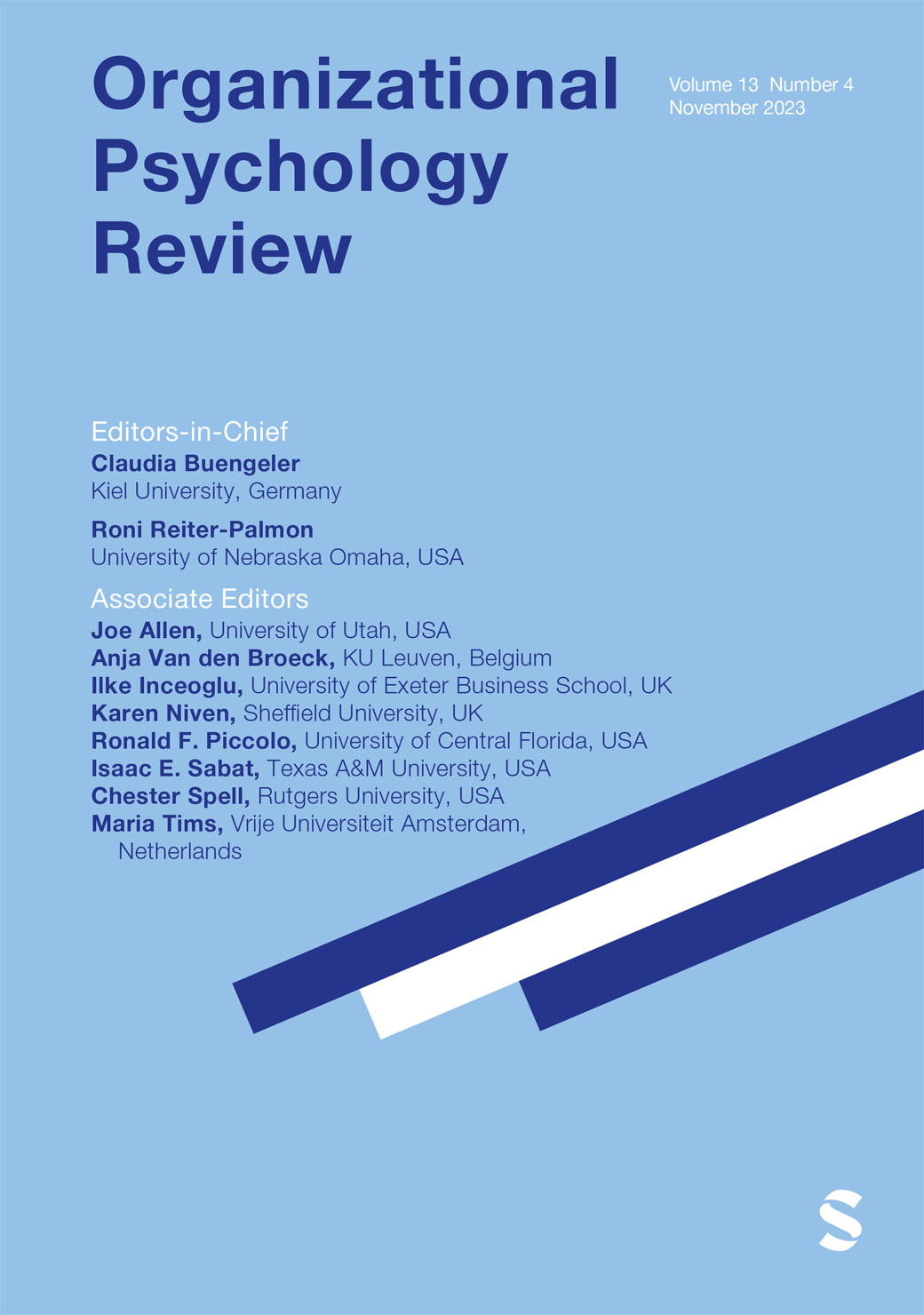社会/个人身份二分法的动态重构
IF 7.1
1区 心理学
Q2 MANAGEMENT
引用次数: 5
摘要
几十年来,组织心理学和社会心理学的学者已经区分了两种类型的身份:社会身份和个人身份。然而,这种二分法在多大程度上有助于理解身份及其动态,不同的方法是否有助于更深入的洞察?这就是本文的指导性问题。我首先回顾了组织心理学中社会/个人身份二分法的框架,并追溯了它在社会心理学中的起源和演变。然后,我评估了这种二分法作为理解身份的工具的优势和局限性。为了保留二分法的优势并克服其局限性,我对身份的社会和个人维度提出了一种修改后的概念化,即基于心理体验(而非身份内容)来定义这些维度,并将它们视为两个独立的连续体(而不是两个层次的二分法,或连续体的对立末端),任何给定的身份都会随着上下文的变化而变化。简单的语言总结一个人可以认同他们生活的许多不同方面:家庭、社区、工作和爱好,仅举几例。同样,将商店中的不同商品分组也有助于将人们可用的不同身份分组。长期以来,这就是研究人员所做的:如果基于种族和文化等因素,则将某些身份称为“社会身份”,如果基于特征和习惯等因素,称为“个人身份”。在本文中,我解释说,由于各种原因,这可能不是映射身份的最准确方法。我建议,与其根据他们来自哪里来对他们进行分类,不如关注身份实际上是如何让人们感受到的,以及这些感受是如何从一刻到下一刻变化的。我还指出,许多身份可以让人感觉自己是一个独特的人,同时也是更广泛群体的一部分。出于这个原因,最好不要将身份的“社会”和“个人”部分视为对立,而只是同一事物的不同方面。本文章由计算机程序翻译,如有差异,请以英文原文为准。
A dynamic reframing of the social/personal identity dichotomy
For decades, scholars in organizational and social psychology have distinguished between two types of identity: social and personal. To what extent, though, is this dichotomy useful for understanding identities and their dynamics, and might a different approach facilitate deeper insight? Such are the guiding questions of this article. I begin by reviewing framings of the social/personal identity dichotomy in organizational psychology, and tracing its origins and evolution in social psychology. I then evaluate the strengths and limitations of this dichotomy as a tool for understanding identities. In an attempt to retain the dichotomy’s strengths and overcome its limitations, I present a modified conceptualization of the social and personal dimensions of identity, one that defines these dimensions based on psychological experience (not identity content), and treats them as two independent continua (not two levels of a dichotomy, or opposing ends of a continuum) that any given identity varies along across contexts. Plain language summary A single person can identify with lots of different aspects of their life: their family, community, job, and hobbies, to name but a few. In the same way it helps to group different items in a shop into sections, it can be helpful to group the different identities available to people into categories. And for a long time, this is what researchers have done: calling certain identities “social identities” if based on things like race and culture, and “personal identities” if based on things like traits and habits. In this paper, I explain that for various reasons, this might not be the most accurate way of mapping identities. Instead of categorizing them based on where they come from, I suggest it’s more helpful to focus on how identities actually make people feel, and how these feelings change from one moment to the next. I also point out that many identities can make someone feel like a unique person and part of a broader group at the same time. For this reason, it’s best to think of the “social” and “personal” parts of an identity not as opposites—but simply different aspects of the same thing.
求助全文
通过发布文献求助,成功后即可免费获取论文全文。
去求助
来源期刊

Organizational Psychology Review
Multiple-
CiteScore
10.00
自引率
1.60%
发文量
25
期刊介绍:
Organizational Psychology Review is a quarterly, peer-reviewed scholarly journal published by SAGE in partnership with the European Association of Work and Organizational Psychology. Organizational Psychology Review’s unique aim is to publish original conceptual work and meta-analyses in the field of organizational psychology (broadly defined to include applied psychology, industrial psychology, occupational psychology, organizational behavior, personnel psychology, and work psychology).Articles accepted for publication in Organizational Psychology Review will have the potential to have a major impact on research and practice in organizational psychology. They will offer analyses worth citing, worth following up on in primary research, and worth considering as a basis for applied managerial practice. As such, these should be contributions that move beyond straight forward reviews of the existing literature by developing new theory and insights. At the same time, however, they should be well-grounded in the state of the art and the empirical knowledge base, providing a good mix of a firm empirical and theoretical basis and exciting new ideas.
 求助内容:
求助内容: 应助结果提醒方式:
应助结果提醒方式:


